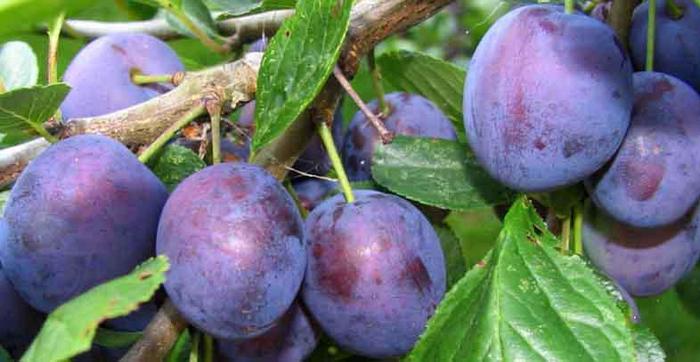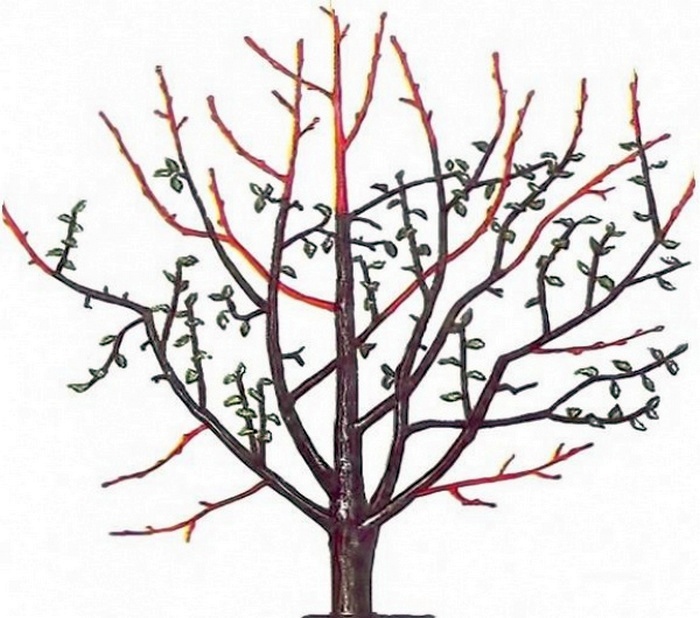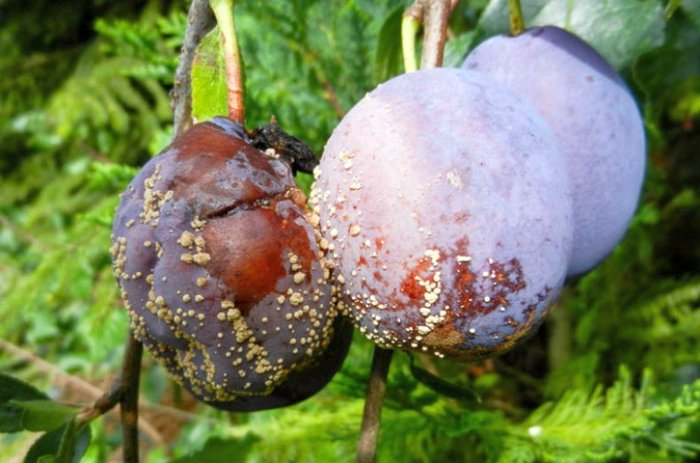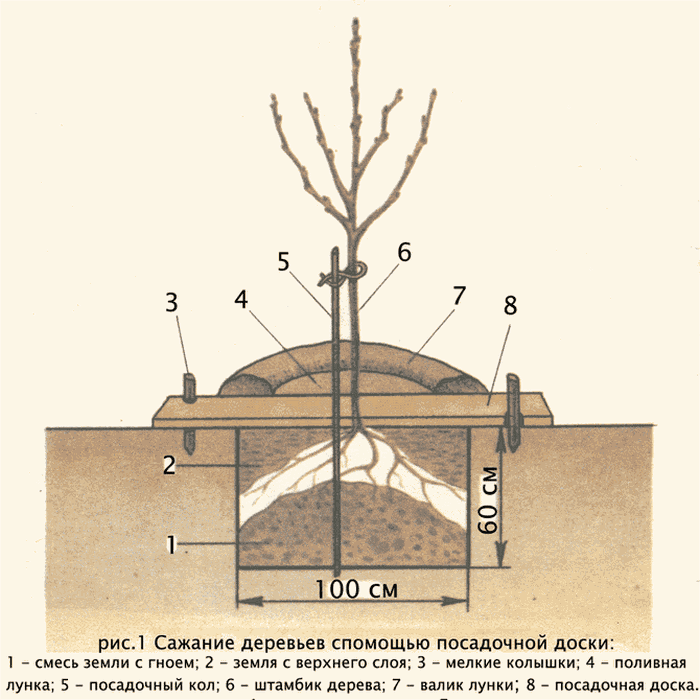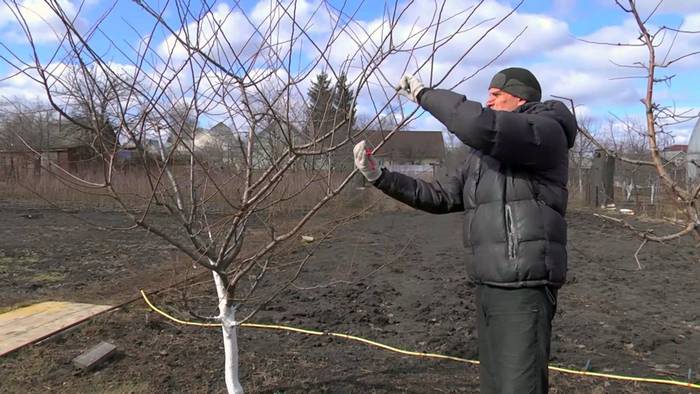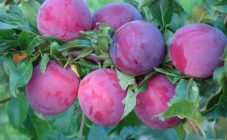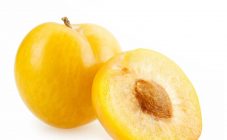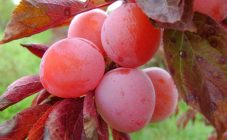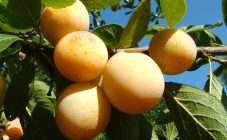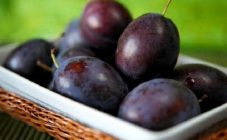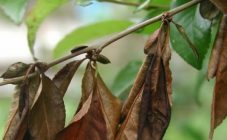Content:
The description of Anna Shpet plum may seem overly laudatory, but the characteristics are really amazing, it's not for nothing that the variety is considered one of the best. The harvest is more than rich, which is an even greater advantage - plums are amazingly stored, they can be transported, they do not deteriorate: they do not wrinkle and do not lose their external and taste properties over time. The fruits have a pleasant rich color, enchanting aroma and sweet taste.
History and varieties of varieties
Plum Anna Shpet first appeared in Germany, it was bred by the German scientist L. Shpet. He named the selection after his daughter. Plum moved to Russia a couple of years after the end of World War II in the 1940s. The people also call the variety Annushka. The plum variety is widespread in warm regions of Russia. Anna Shpet survives frosts very badly, but she tolerates drought very well. It can be grown in areas with moderate temperatures, but it will bear fruit less.
Plum trees of this variety are considered late ripening, it is better to harvest in late September and until mid-October, so the fruits will be sweeter. The advantage of the variety is also that plums can hang on the branches for a long time without falling off.
The fruits are more rounded than traditional elongated or ovoid plums. The skin is dark purple in color, as if covered with a bloom, which is a decorative feature of the variety. It is easy to wash and slightly protects the thin skin from damage. The fruits are medium in size, but the young inflorescences are quite large. Particularly beautiful are the snow-white flowers that stick around the tree tightly during the flowering period. Leaves are oval, more rounded on one side, green in color with the largest cutting.
Specifications
The tree has poor winter hardiness and can freeze even with a slight decrease in temperature, but it quickly recovers. But still Anna Shpet is recommended for planting in warmer, southern regions.
A young tree in the first years has a height of 2 to 3 m, later it can reach up to 4-5 m. The crown is branched, but it is not customary to cut the trunk, as is sometimes done when forming other varieties. In the first 3 years of fruiting, the yield can reach 25 kg from 1 tree.
On average, the plum begins to bear fruit 3-4 years after planting the seedling. If it is grown with the help of a shoot, then the development of the seedling will take several more years, and the harvest can be expected no earlier than in 6-7 years. But, if the gardener does not want to wait, then there is another way - grafting. With its help, cuttings of an adult plum are implanted into the trunk of another tree (in late winter - early spring), thanks to which the first plum crop can be harvested this year.
Disease susceptibility
Most often, Anna Shpet plum trees become infected with moniliosis, which is why gray formations appear on the fruits, which lead to rotting of the fruits. The disease spreads rather quickly through the tree and greatly spoils the harvest. To prevent the appearance, you can treat the trunk, branches and leaves with Bordeaux liquid in late spring. If the disease manifests itself, then you need to cut off diseased branches, leaves, burn them and re-process the tree.
Plum trees are sprayed with the same mixture for another, no less rare, but destructive disease. The red spot appears on the leaves as first small yellow or orange specks, which later become bulky.
In case of infection, the foliage also needs to be burned, in addition, you can treat the trunk and soil at the roots with copper sulfate.
Features of growing crops
Before planting, a hole is dug in width (0.9-1 m) and depth (0.5 - 0.6 m). Half a bucket of turf mixed with half a bucket of manure or rotten plants is poured there. After that, a peg is tightly driven in there, around which the seedling will then be tied. Next, a young tree is planted and not very densely covered with earth. It is important that the root collar rises above the ground. A pollinator tree is planted at a distance of several meters, otherwise the plum will not bear fruit.
The tree of this variety is indifferent to the quality of the soil and the lack of moisture, since the plum survives drought well. For planting, it is better to choose a sunny and wind-protected place, since the tree loves warmth. A plus will be the soil slightly diluted with black soil and sand.
In the second year after planting the seedling, fertilizing is required for which nitrogen nitrate is used. Usually, feeding is carried out 3 times: at the very end of spring, after 2 weeks at the beginning of summer and when the first ovaries appear. This procedure must be carried out annually.
Trimming and shaping
In the first year of flowering, remove most (70%) of the ovary. In this case, the tree will gain strength and in a year will give a rich harvest. As a preventive measure, and in the second year, you can repeat the procedure, this is especially required with an excessive amount. Then the fruits will be more juicy, large and rich, and the tree will bear fruit better later.
The first pruning is done, like with other trees, immediately after planting. The branches are pruned after 5-6 buds, located above the stem level. Such shortening should be carried out every year (preferably several times a season - in spring and summer), especially in the early years when the tree is not yet bearing fruit. But you need to be very careful, as you cannot overdo it, so as not to make the tree "bald" by removing most of the fruiting branches.
A mature and mature tree should also be pruned. First of all, in the middle of summer, you need to thin out the crown, and in the early to mid-autumn (after harvesting), all old, dry, non-fruiting branches, growing parallel to the trunk, must be removed. All shoots should ideally move away from the main trunk by 60 °, if they do not grow like that, then they can not be spared.
Advantages and disadvantages of the variety
Anna Shpet plum trees are considered one of the best for a reason. The fruits have an incredibly rich taste, juicy and sweet pulp. Plums are stored for a long time and can be transported without problems. It is even a pity to use such plums to produce prunes, but this variety is more than popular in this industry.
At the bottom, at the roots of the tree, a huge amount of young growth is formed. On the one hand, this is a minus, since they require multiple removal, but, on the other hand, they can be transplanted and many young seedlings can be obtained for sale or propagation in the garden.
In general, Annushka plum, whose variety description speaks of many advantages, has practically no drawbacks, with the exception of one - the tree does not tolerate cold and frost, the variety is intended exclusively for growing in warm climates.Also a negative characteristic can be called the need for pollinators, but in principle this is not a problem if many crops are already planted in the garden.
